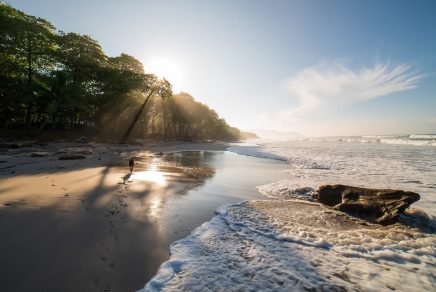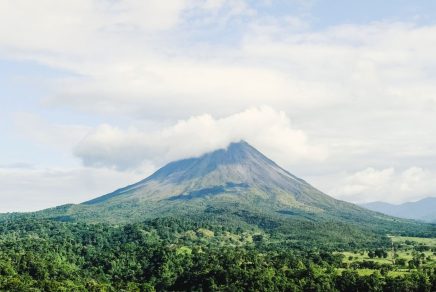Costa Rica, a jewel in Central America, stands out as a model for ecotourism thanks to its unwavering commitment to conservation efforts and sustainable practices. Known as a prime ecotourism destination, the country boasts an impressive natural heritage: with around 6% of the world’s biodiversity, Costa Rica is home to a breathtaking variety of ecosystems, from lush forests and blue flag beaches to rugged mountains and mangroves. Costa Rica offers travelers a unique chance to experience this natural beauty while supporting efforts to preserve it, showcasing how sustainable travel can create lasting positive impacts.
But how can you experience this incredible country while minimising your carbon footprint? Here are some practical tips and recommendations for eco-friendly travel to Costa Rica, so you can enjoy this paradise in a responsible way.
What is ecotourism in Costa Rica and how is Costa Rica so eco friendly?
From pristine rainforests to volcanic landscapes, Costa Rica’s natural wonders draw conscious travelers seeking meaningful experiences with minimal environmental impact. As a prime destination for responsible travel, Costa Rica pioneered the connection between nature conservation and tourism. The country dedicates over 25% of its territory to national parks and protected areas, hosting an remarkable 6% of Earth’s biodiversity within its borders.
The economic benefits of ecotourism are evident in Costa Rica’s thriving tourism industry, where responsible travel directly supports local communities and conservation initiatives. Areas such as Manuel Antonio, Monteverde, and Corcovado demonstrate Costa Rica’s commitment to high environmental performance standards. Through a robust Environmental Performance Index and strict criteria for sustainable tourism, Costa Rica has set a benchmark for other countries striving to balance economic development with environmental preservation.
This balanced model has earned Costa Rica worldwide recognition as a leader in sustainable tourism. The country’s commitment shows through its ambitious environmental goals, including becoming carbon neutral by 2050, and its innovative certification system that rates tourism businesses based on their ecological practices.Eco-friendly travel tips for Costa Rica


Examples of ecotourism in Costa Rica
Whether you’re in Costa Rica or anywhere else, there are important ways to travel more sustainably and leave a positive impact. Here’s how to go green while enjoying all that Costa Rica has to offer:
- Protect the environment: Take small steps that make a big difference, such as reducing waste, recycling whenever possible, and respecting natural areas by staying on designated trails and avoiding disturbing wildlife. Avoid single-use plastics and bring your own reusable water bottle, cutlery and bags to reduce waste.
- Support the local economy: Support the local economy by choosing local and artisanal products. Buy locally made souvenirs and handicrafts rather than mass-produced items, and make sure you pay a fair price to support Costa Rican artisans. When dining out, choose family-run restaurants that serve traditional Costa Rican dishes and use sustainably sourced ingredients.
- Respect cultural diversity: Participate in activities that celebrate and respect Costa Rica’s rich cultural heritage. Be open to learning about local customs, traditions and languages, and show genuine interest and curiosity. Participating in cultural experiences not only enriches your trip, but also helps to preserve these traditions.
- Choose eco-lodges: Choose eco-friendly accommodations that prioritise sustainable practices. Many eco-lodges in Costa Rica are designed to minimise their environmental footprint by using renewable energy sources, managing waste responsibly and conserving water. Staying in these properties supports sustainable tourism and allows you to enjoy a deeper connection with the natural environment.
Immerse yourself in the local culture
For a truly enriching experience, consider immersing yourself in the daily life of the ticos (Costa Ricans). By staying with local families, you can experience Costa Rican hospitality up close and share in their daily routines, from farming to learning traditional crafts. This type of travel deepens your connection to Costa Rica and offers unforgettable insights into the people who are the guardians of this stunning environment.
Meet the Borucas (or Brunkas) on the Pacific coast or the Bribri along the Yorkin River in the Caribbean. In these vibrant communities, you can participate in fruit harvesting, basket weaving and traditional cooking. Discover the famous hand-carved masks of the Borucas or learn about Bribri ancestral ceremonies such as cocoa rituals. Participating in these traditions gives you a window into Costa Rica’s indigenous culture and allows you to support these communities directly.
This type of trip not only provides a meaningful experience, but also provides direct financial support to indigenous and rural communities, helping them to maintain their way of life while preserving their unique heritage.
Help protect wildlife with eco tour operators in select destinations



Costa Rica’s wildlife is incredibly rich, with over 800 species of birds and more than 200 species of mammals. However, this biodiversity is threatened by poaching, habitat loss, and human encroachment. By participating in ecotourism and conservation efforts, tourists can make a direct contribution to protecting this invaluable wildlife.
One of the best ways to sustainably observe Costa Rica’s wildlife is by visiting wildlife sanctuaries, national parks, or biological reserves with a naturalist guide. With their expertise, you’ll experience the most incredible animals, from sloths to colorful birds, while having the least possible impact on fragile habitats. Guided visits are essential, as they help manage the amounts of people entering protected areas, reducing the footprint of the tourism industry on ecosystems. Knowledgeable guides ensure respectful, low-impact viewing, allowing tourists to witness the wonders of Costa Rica’s wildlife refuges without disturbing the animals or their environment.
Supporting local guides and conservation projects also empowers Costa Rican communities, reinforcing their ability to protect these natural treasures. For example, getting involved in sea turtle protection initiatives during nesting season not only provides a hands-on conservation experience but also supports the survival of endangered species, such as leatherback and green turtles. Through ecotourism, Costa Rica’s visitors become advocates for the country’s conservation mission, helping protect this unique biodiversity for generations to come.
Support conservation with curated activities
Costa Rica is renowned for its commitment to conservation, with nearly 30 national parks and two UNESCO World Heritage Sites showcasing an incredible variety of ecosystems and landscapes. The country is a treasure trove of flora, with over 10,000 species of plants, 1,000 species of trees and nearly 1,500 species of orchids.
As a visitor, you can help protect these ecosystems by getting involved in local conservation projects. Many parks and reserves welcome volunteers to help with tasks such as patrolling protected areas, restoring park infrastructure, reforesting degraded areas and cleaning beaches. These hands-on activities offer a unique way to explore Costa Rica while helping to preserve its natural environment.
Whether it’s helping with reforestation, tracking wildlife populations or mapping natural areas, these conservation efforts allow you to leave a lasting impact while building a strong connection to Costa Rica’s wild landscapes. It’s a powerful way to explore the country’s natural wonders while actively contributing to their preservation.
Act on your carbon footprint
Travelling to Costa Rica often involves flying, a mode of transport that has a significant carbon footprint. To limit this impact, consider offsetting the CO₂ emissions of your flight.
By offsetting your carbon footprint, you’ll be helping to fund quality-certified projects and reduce the impact of your trip on the climate.








